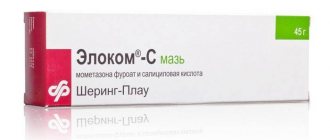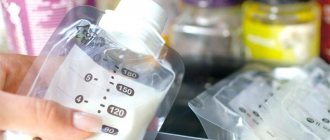Good day, dear readers. In the first year of a child’s life, there will definitely be a need to purchase a bottle, and in some cases, more than one. In addition to the fact that you need to know how to choose the right bottle and pacifier for it, you also need to know how to properly feed and water your baby with it. In this article, you can find out what recommendations should be followed to fully use a bottle, how to feed your baby formula and expressed milk from this container, and also what mistakes inexperienced parents can make.
Why is pumping necessary?
In Soviet times, pediatricians insisted that after each feeding the breasts should be additionally expressed, as they say, “dry.” It was believed that this particular procedure helps to achieve an optimal level of lactation and prevents milk stagnation. Modern experts categorically do not share this point of view and allow expressing breast milk only in cases where it is really necessary.
The need to pump occurs in the following cases:
- When lactation exceeds consumption (there is too much milk, the baby does not have time to eat, breastfeeding is completed, the mother works).
- As a prevention of mastitis (done for discomfort, lumps, painful sensations in the chest).
- Maintaining lactation during the period of breastfeeding refusal (mother’s illness, ineffective breastfeeding by the child due to prematurity).
- When it is necessary to stock up on food for the child (there will be a vacation without the child, the mother will often be absent for work or study).
If there is no discomfort in the chest, then there is no need to express additionally after feedings: this can lead to stagnation. The pumping procedure should only occur when it is necessary for the mother or baby. If you are not sure about this, it is better to contact a lactation consultant.
Advantages and disadvantages of manual expression over hardware
Manual expression has a number of significant advantages:
We recommend reading: Storing breast milk after pumping
- Availability. There is no need to purchase additional expensive devices.
- Physiological.
- Manual expression increases lactation.
- You can express milk manually at any time and under any circumstances.
- Correct technique ensures a painless process.
- It is impossible to injure the mammary gland with your hands if you follow the pumping rules.
There are also disadvantages:
- The process is quite long (at least 20-30 minutes).
- It takes experience and constant practice to master the correct technique.
Due to the obvious advantages, most mothers prefer manual milk expression. Lactation consultants agree with them and consider manual pumping to be the most correct and physiological way to obtain milk outside of breastfeeding.
Necessary equipment
Before you think about the issue of proper feeding, you first need to find out what you need for this:
- Buy at least one bottle. Approach this issue with special attention, decide on the size, shape and material of this device, taking into account all the pros and cons.
- When buying a bottle, choose a pacifier according to the age of your little one, and also decide which material (latex or silicone) is preferable to you.
- Think about how you will sterilize children's dishes and what to dry them on. You can purchase a special sterilizer, and for drying, for example, use a towel intended exclusively for this purpose.
Learn more about choosing a bottle for feeding your baby.
How to properly express breast milk by hand
Expressing milk by hand is a rather labor-intensive process, but the most physiological. Grandmothers and mothers did not have modern devices at hand that help them express their breasts, but they successfully coped with this task if the need arose.
A light massage of the mammary glands often helps. You need to do it in a circular motion for 10-15 minutes. There is no need to put in excessive effort. Movements should be soft and smooth
Preparing for hand expression
It is not always possible to express your breasts the first time, especially if you have no experience in this matter. To make milk flow easier, you need to induce a rush. The following methods can be used:
- Wash your breasts with warm water. A warm compress from a towel or shower will do.
- 10-15 minutes before pumping, drink a mug of warm tea or water.
- You can get a hot flush by leaning forward and shaking your chest a little.
- Psychological impact: think about the baby, imagine him nearby, how he sucks milk.
- You can use physical contact with the baby, for example, just lie next to him.
- Many moms find it helpful to relax with calm music or nature sounds that can be played through headphones.
- The most effective way is to give one breast to the baby to suck on, and express the other. The tide will be in both mammary glands at the same time, and getting milk will not be difficult.
Important: If there are lumps in the chest, then the massage must be done extremely carefully. Do not try to break or crush them. This is very dangerous for a woman's health! There should not be any painful sensations.
The technique of softening the nipple areola will help prepare the breast for pumping. This method will greatly help a young mother in the first time after childbirth. Thanks to this technique, the nipple is formed, the breast softens, and it becomes easier for the baby to suck and for the mother to express milk if necessary.
Areola softening technique
- Place the three middle fingers of both hands near the nipple, forming a kind of “window”.
- Press your fingers towards the chest and hold in this position for about 10 seconds.
- Place your fingers vertically and press again, holding for 10 seconds.
- Repeat all manipulations several more times.
30 to 60 seconds of this massage will help make the areola soft.
Technique for expressing breast milk by hand
Once the breasts are well prepared, you can begin pumping. Step-by-step instruction:
- The thumb should be placed on top of the areola, and the index finger on the bottom.
- Move your fingers towards the chest, lightly squeezing the areola between your fingers.
- Squeeze the areola more tightly.
- Move your fingers forward.
The correct placement of fingers on the areola of the nipple is shown with green arrows, and incorrect ones with red arrows.
Incorrect nipple latching will cause the milk to go deeper into the breast and make it almost impossible to express it.
All manipulations must be done smoothly, without tugging at the breasts or rushing. Fingers should not slide over the mammary gland. You need to ensure that the position of your fingers does not change. Don't pull the nipple too hard. This can damage the milk ducts.
If your milk doesn't come right away, don't despair. Perhaps by making a few movements described above, you will be able to express your breasts. At first the milk flows out in drops and only then flows out in a steady stream. There is no need to leave things halfway. To pump, you need to spend time.
If the milk has stopped expressing, then you can do the same steps, only place your fingers not horizontally, but vertically.
If after such manipulation milk is not released, then you can repeat the breast massage or try to cause another rush.
Expression technique with vertical grip of the areola
Warm bottle method
It happens that it’s hard to express right away. This often happens with congestive and inflammatory processes in the chest. A tense nipple and pain prevent you from expressing milk in the usual way, then you can use the “Warm Bottle” method. The gist is this:
- You need to take a glass bottle with a neck of about 4 cm or a little more.
- The bottle is heated thoroughly in hot water.
- Before the procedure, the neck must be cooled by applying ice or simply dipping it in cold water.
- The areola of the nipple is lubricated with oil or Vaseline and placed in the neck of the bottle.
- Under the influence of heat, the nipple is drawn into the bottle, and milk begins to be released in a steady stream. After relief, the bottle can be removed.
Having softened the breast in this way, you can continue further expressing by hand or attach the baby to the breast. You can learn more about pumping in this article.
How to bottle feed your baby
The feeding process includes three stages:
Stage one. Preparatory . It involves not only the acquisition of special devices (and an important role is played not only by the shape and material of the bottle, but also by a correctly applied scale, preferably with embossed divisions, because now it is important to clearly measure a single portion), but also by preparing baby formula or expressing breast milk.
Stage two. The actual feeding process .
Third stage. It is necessary to allow the baby to burp the excess air that has entered him during the meal.
If this is not done, you may experience flatulence and colic. In addition, a child who has swallowed air feels a feeling of satiety, although in fact he remains hungry. That is why it is recommended to hold the baby in a “column”, not only after the end of the eating process, but also during the process.
It is necessary to hold the baby in an upright position for several minutes. Take the little one facing you, you can place him on your shoulder so that his arms are on your back.
Possible difficulties
General guidelines for manually expressing breast milk
There are several rules that must be followed, and then expressing and storing milk will not be a problem:
- A bottle or other container for milk should be prepared in advance so as not to lose precious drops when starting to express into a napkin.
- Mommy's hands should be washed thoroughly with soap.
- There shouldn't be any pain! If it hurts to express, then the technique is incorrect, and you need to contact a breastfeeding consultant or more carefully study the material on this topic on the Internet or in specialized literature.
- You need to express one breast for at least 5-6 minutes, and then proceed to the second. After expressing the second breast, you need to move on to the first again.
- To get full milk, you need to express for quite a long time (about 30 minutes). Only after such work can you be sure that both fore and hind milk have entered the container.
- If your hands are tired, you can change them. There is no need to turn pumping into a workout.
- It is necessary to carry out the pumping procedure once every few hours, simulating the application of a baby to the breast. This way, breastfeeding will continue successfully, and the amount of product received will be sufficient to feed the baby.
- If a mother pumps during drug treatment to simply preserve breastfeeding, then such a product is unusable and must be thrown away.
- You should not trust other people to express your breasts. Only the woman herself, focusing on her feelings, will be able to do everything correctly and achieve excellent results.
- The expressed milk product must be stored correctly (up to 8 hours at room temperature, two days in the refrigerator, up to a year in the freezer).
- The correct container is important - these are special containers and bags for freezing. They are sealed and equipped with a measuring scale, which is very convenient for storage and subsequent use.
- Each container with expressed product must be signed, indicating the date and time of the expression procedure. This will help you avoid feeding your baby expired milk.
You can distinguish milk by eye by color. The picture clearly shows the difference
Foremilk is less filling, while hind milk is more nutritious and thick. The combination of both liquids gives a perfectly balanced, complete product.
Hands are an ideal natural “breast pump”. With the right technique and a competent approach, nothing else is needed to preserve breastfeeding or provide the baby with healthy nutrition even in the mother’s absence. You can read how to properly express your breasts using hardware here.











